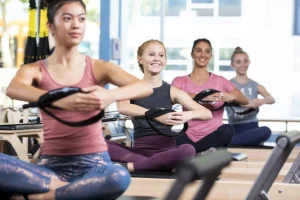Exercises geared towards women’s fitness tend to be less intense than those geared towards men, but they are no less effective. Compared with men, women generally spend more time on physical activity and are also less likely to get injured. According to Amy Eyler, assistant professor of community health at Saint Louis University, physical activity among women is influenced by many factors, including their size, strength, and age. Despite these differences, there are some similarities between the two genders when it comes to their approach to fitness.
The first reason is that many women struggle to find the time to perform exercise. They tend to distribute their workload between work, family, and home, and social obligations. However, women report that social support is important in sustaining an exercise program, and women who feel supportive and encouraged by friends and family are more likely to continue exercising on a regular basis. Increasing fitness levels is also linked to reduced risk of disease and improved quality of life.
Women’s body mass index (BMI) has a direct relationship with their mortality, and this relationship is consistent across studies. While body mass index can be a powerful predictor of cancer mortality, it is not the sole determinant. Moreover, a woman’s physical activity may depend on her personal circumstances, such as income, and social obligations. For example, if she’s a career woman, she might not be interested in physical activity.
Lack of motivation can prevent women from getting involved in fitness activities. Some women don’t even like the idea of sweating because they think exercise must be painful. Contrary to popular belief, physical activity doesn’t have to be painful or unpleasant. Try dancing, roller-skating, or jogging with friends. There are plenty of activities for women to choose from – and you can make it fun too! Besides, exercising with a partner doesn’t have to be boring.
It’s easy to see why women don’t exercise. A lack of time is the most common reason for not exercising. While moderate-intensity exercise is more effective for fat loss and improving body composition, it’s not the best option for busy working women. If you can fit in some moderate-intensity exercises, you’ll be more likely to get the benefits of physical activity in a short period of time.
Among women, there is an association between fitness and mortality. While men’s CRF is higher than that of their counterparts, women’s CRF is significantly lower than that of men. In addition, breast cancer survivors’ VO2 peak was statistically lower than that of their healthy peers. This is not surprising because CR fitness is important for the overall health of a woman, but women’s physical activity level is often overlooked.





